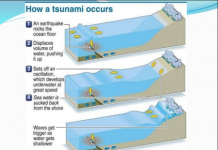The coral reef destruction is badly impacted due to human activities. Reefs are very fragile underwater ecosystems and environments that cannot tolerate a wide range of conditions. Turbidity, temperature, and water depth are variables that must be firmly controlled in order to support healthy reefs. Other potential problems can be attributed to human activities. The major obstacles are chemical and organic pollution, thermal pollution, turbidity, and physical destruction.
The general trend is that reefs tend to be most protected along the coasts of developed countries and are in serious jeopardy in developing countries. Many may be asking about the value of coral reefs. The Coral Reef Destruction is due to the first things that come to the human mind are:
-
Their protection of nearby coastal areas, much like that afforded by barrier islands
-
Therefore, the abundant fishery that they support for both sport and commercial fishing.
-
The tourist and their recreational values.
-
The position of the most prolific and diverse biotic systems in the marine environment, and as such deserving of protection.

Coral Reef Destruction from Human Activities, – Reefs are very fragile environments that cannot tolerate a wide range of conditions.
Also, the fringing and barrier reefs are tending to be most vulnerable to human impact because of their proximity to land. Atolls naturally have little or no population on or close to them. There are ever-increasing human-generated issues on atolls. One of the most well-known is the nuclear bomb tests in the southwest Pacific by France and the United States. French tests have been constant in the face of extensive protests from other countries and various environmental groups.
Military activities, in general, have been creating a severe problem for atoll reefs because of the widespread operations on them. An accident in the Florida Keys caused severe damage to a reef as a research vessel ran aground. Mining activities have also been conducted on reefs. The coral, sand, and gravel have been taken for a mixture of uses, particularly for construction.
The blasting that is regularly used also kills a lot of the fish. In some island reef areas, dynamite is used as a means of fishing. Due to the catastrophic nuclear testing activities, French Polynesia has been the key focus of these activities; however, they have also taken place in the Caribbean. A somewhat related activity is the collection of corals for sale to tourists.
Furthermore, the biggest concerns for reefs come from the water and its contents. Because reefs require warm, clear, pure seawater, any deviation from this high quality may cause problems. Suspended sediment can be an issue for all filter feeders on the reef and can reduce light penetration for photosynthesizes.
This may be caused by dredging nearby; such as in borrow areas for beach nourishment. One of the most important considerations for dredging in low latitudes is the potential effect on reefs. Another source of turbid waters that might influence -reef environments are runoff from the adjacent mainland.
Further, the rainfall in the tropics is usually high and summer or monsoon rains can cause great amounts of runoff that carries large quantities of sediment. Thus, much of this sediment will be in suspension as it moves into the shallow marine environment and will cause serious issues for reefs. One place where such conditions occur is on the Gulf of Mexico coast of Belize in Central America.

In this area, the reef location is controlled, at least partially, by the distribution of suspended sediment. Chemical pollutants can be a major limiting factor in reef distribution or can kill existing reefs. Nutrients typically thought of as aiding in reef development and growth can be a limiting factor if present in large quantities. Recent work in the Caribbean has shown that overloading a reef with nutrients will kill the reef, a bit like overeating.
There is a concern about reefs in the Florida Keys because of the ever-increasing domestic sewage causing nutrients to be dumped into the marine environment. The same situation exists in some heavily developed areas of islands, such as Tahiti.
Moreover, the other types of chemical pollution include a variety of industrial waste that is accidentally or deliberately released into the nearshore environment where reefs are present. Along the southern coast of St Croix in the United States Virgin Islands, there is enduring effluent from a rum distillery.
However, the reefs cannot exist in the vicinity of this point source discharge. Although there are many types of organisms that build reefs, we typically think only of coral gal reefs when the word is mentioned. These fantastic living systems are a very significant feature of the marine environment. They give protection to the coast and plentiful resources for the people who live near them.
Coral reefs are quite fragile systems, in that they must have very high water quality, high temperatures, and clear water for photosynthesis, and many environmental factors can lead to their demise. Moreover, few of the byproducts of rises in coastal development are having negative impacts on coral reefs. Pollution from the atmosphere, human waste disposal, and other natural vulnerability are all causing troubles for these reefs.







